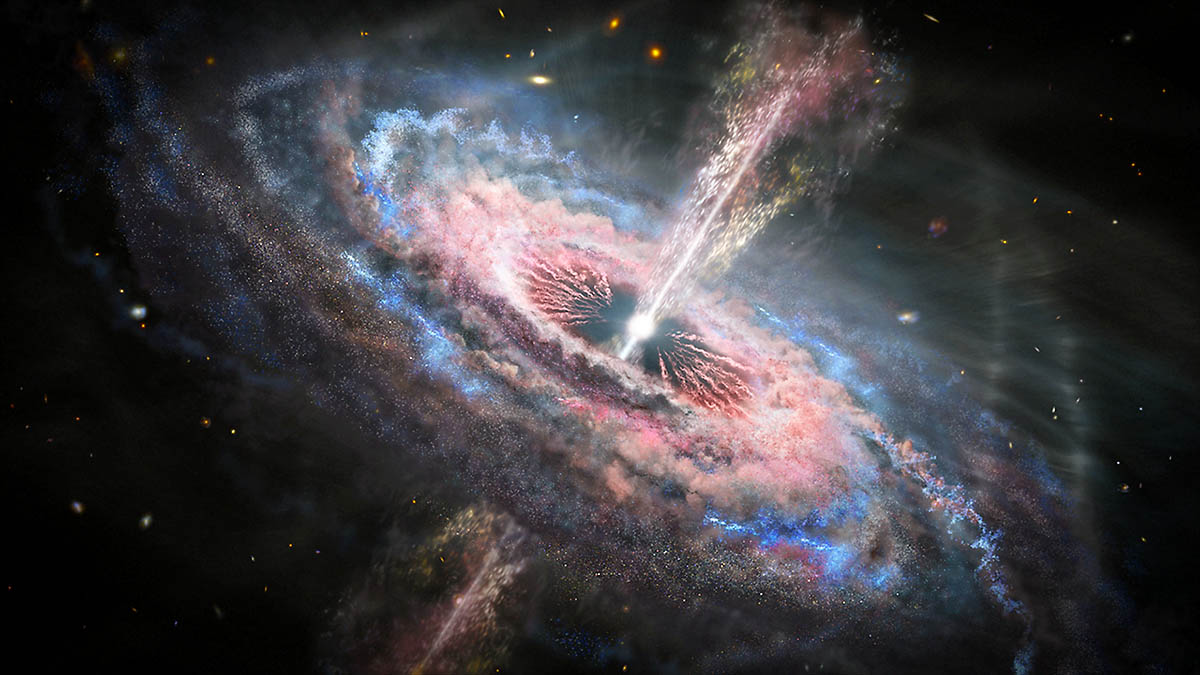This is an illustration of a distant galaxy with an active quasar at its center. A quasar emits exceptionally large amounts of energy generated by a supermassive black hole fueled by infalling matter. Using the unique capabilities of the Hubble Space Telescope, astronomers have discovered that blistering radiation pressure from the vicinity of the black hole pushes material away from the galaxy’s center at a fraction of the speed of light. (NASA, ESA and J. Olmsted (STScI))
Home This is an illustration of a distant galaxy with an active quasar at its center. A quasar emits exceptionally large amounts of energy generated by a supermassive black hole fueled by infalling matter. Using the unique capabilities of the Hubble Space Telescope, astronomers have discovered that blistering radiation pressure from the vicinity of the black hole pushes material away from the galaxy’s center at a fraction of the speed of light. (NASA, ESA and J. Olmsted (STScI)) This is an illustration of a distant galaxy with an active quasar at its center. A quasar emits exceptionally large amounts of energy generated by a supermassive black hole fueled by infalling matter. Using the unique capabilities of the Hubble Space Telescope, astronomers have discovered that blistering radiation pressure from the vicinity of the black hole pushes material away from the galaxy's center at a fraction of the speed of light. (NASA, ESA and J. Olmsted (STScI))
This is an illustration of a distant galaxy with an active quasar at its center. A quasar emits exceptionally large amounts of energy generated by a supermassive black hole fueled by infalling matter. Using the unique capabilities of the Hubble Space Telescope, astronomers have discovered that blistering radiation pressure from the vicinity of the black hole pushes material away from the galaxy’s center at a fraction of the speed of light. (NASA, ESA and J. Olmsted (STScI))


